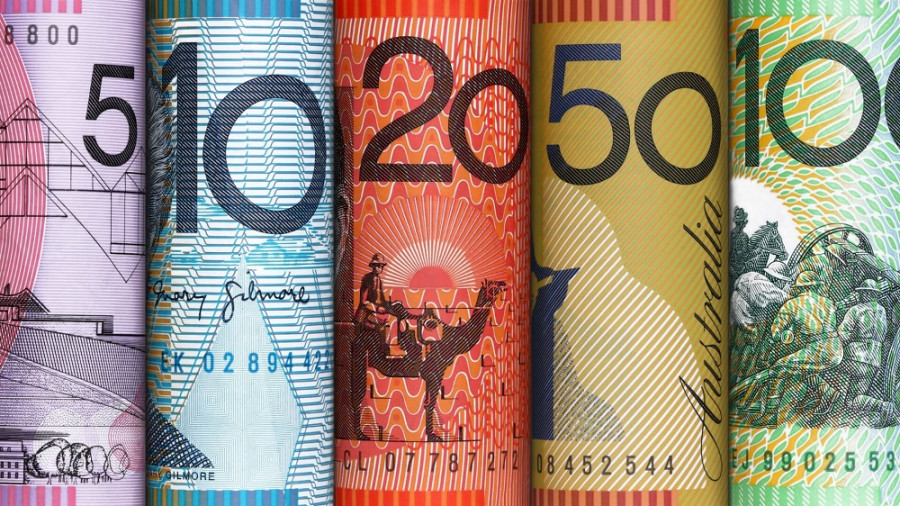
Australia's inflation report was released on Wednesday, which exceeded expectations of most experts. The monthly Consumer Price Index rose 7.3% in the year to November 2022, with projections at 6.8%. Notably, in the third quarter, inflation showed signs of slowing (when the growth forecast was 7.4%, the indicator turned out to be at 6.9%). And in the fourth quarter analysts expected further development of this trend - but in fact the CPI returned to the level of the second quarter, thereby puzzling traders and investors.
In addition, another equally important report was published in Australia, which reflected a significant increase in consumer activity. We are talking about retail sales, which rose by 1.4% m/m in November (with a modest forecast of 0.6%). This is the strongest growth rate since last March. For comparison, in the previous month the figure increased by only 0.4%.

The data contributed to the pair's fundamental picture, which is shaping up quite positively. The relevant news flow is mainly related to China, which abandoned its "zero-Covid" policy and resumed imports of coal from Australia. AUD/USD traders appreciated the renewed relations between Beijing and Canberra: in the first week and a half of 2023, the pair rose more than 200 pips to settle at the 69th figure area.
Wednesday's inflation report, which is important in and of itself, also suggests that the Reserve Bank of Australia will continue to "quietly" tighten monetary policy parameters. The RBA has cut the rate of interest rate hikes to 25 points since last October, but assures markets that it is not going to pause monetary tightening. The resumed growth of inflation in the fourth quarter suggests that the issue of a pause is now finally off the agenda (at least in the perspective of the next meetings). Following the December meeting, RBA Governor Philip Lowe said that the
Board is not on a pre-set course. In his words, "the size and timing of future interest rate hikes will continue to be determined by the incoming data and the Board's assessment of the outlook for inflation and the labour market." Another noteworthy phrase from Lowe is that the Board's priority is to re-establish low inflation and return inflation to the 2-3% range over time.
As we can see, so far inflation in Australia is moving in the opposite direction. Therefore, the likelihood of any pause at this point is close to zero. On the other hand, the latest inflation report is unlikely to prompt the RBA to be more aggressive (in the context of a return to the 50-point rate). Most likely, the Australian central bank will continue to raise the rate in 25-point increments, without risking to increase the rate due to possible side effects (relevant concerns were repeatedly voiced by the RBA representatives).
In other words, the aforementioned report will not lead to any "revolutionary" changes, despite its "green" color. At the same time, this report has reduced the probability of a pause in the RBA rate hike to zero. That's enough for the aussie to keep trying to climb back up to the 70s.
But so far the bulls' attempts to get closer to the main price barrier at 0.7000 are failing. In the last two days, the bulls were attacking the intermediate resistance level at 0.6930 (the upper line of the Bollinger Bands indicator on the daily chart), but each time they were back to their previous positions, to the base of the 69th figure. The reason for such indecisiveness is also caused by the inflationary report, only now it is the US one.
Let me remind you that the US Consumer Price Index will be released at the beginning of the US session. According to most experts, the report will reflect a further slowdown in US inflation, reinforcing the discussion that the Federal Reserve may move to a 25-point rate hike. The likelihood of such a scenario materializing (at least in the context of the February meeting) has risen to 76% after last Friday's Nonfarm data. If traders are disappointed with it, then the probability of a 25-point rate hike in February will probably rise to 85-90%. The greenback will again come under pressure and bulls will have an excuse to march to the 70s.
But the alternative scenario (though unlikely, of course) is that US inflation will show growth contrary to what most experts predicted. In that case, the dollar bulls will assert themselves all over the market, especially in the light of the latest statements of the Fed representatives. Mary Daly and Raphael Bostic made some very hawkish remarks this week. Specifically, Daly said that the rate could be raised "by either 25 or 50 points" at the next meeting. Also, she believes that the final point of the current cycle would be in the 5.1%-5.25% range (that is, she was against lowering the upper limit). Bostic took a similar stance.
All this suggests that it is too early to write off the hawkishness of the Fed: if the inflation report surprises market participants with its green color, the US currency will strengthen its position considerably. Again, this option is unlikely, but judging by the values of the dollar pairs, traders do not risk to play against the greenback on the threshold of this report.
Thus, at the moment, the best option is to take a wait-and-see stand, because the key macro report of Thursday is hypothetically able to "redraw" the fundamental picture for all the dollar pairs.